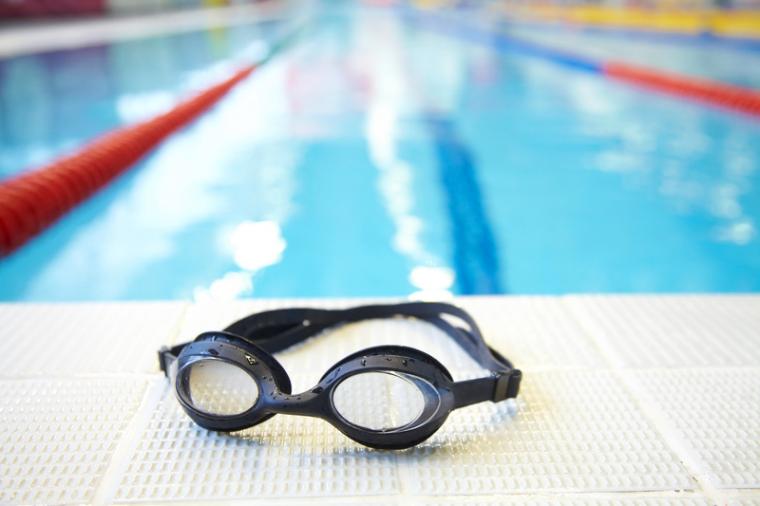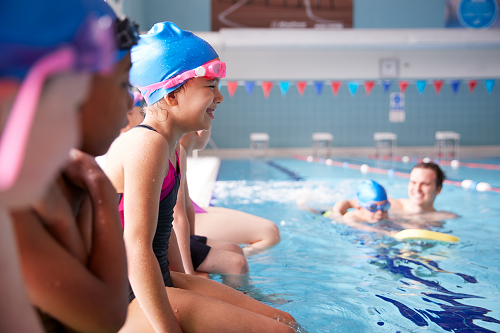

As promotional opportunities go, this might be even better than the Olympics (gold medals and all) for organizers of swimming and diving events, not to mention venues. The World’s Largest Swimming Lesson (WLSL), a global initiative for water safety, comes around on June 23, and is attempting to make its mark in the Guinness World Records once again. (It’s already there; it just wants to break its own record.)
All venues have to do in order to be part of the effort is build a free 30-minute swim lesson into their day at any time during June 23. (Aquatic venues can visit the WLSL website to register their intention to participate).
The lesson (or lessons, if you’re doing more than one) can take place alongside the usual daytime schedule. If the pool happens to be hosting a swim meet that same day, it’s an even better opportunity for inspiring those who have just learned some of the basics.
It's also a media opportunity that can help promote your event, particularly if you provide plenty of advance notice, and take time to make sure the community is aware of the event as well. (And since it takes place when most schools have let out for summer, it's an even better time to get kids' - and parents' attention.)
And since, after all, everyone loves the idea of being part of a Guinness attempt, the event has undeniable crowd appeal, and can help attract new attention to swimming and diving programs. It’s also a great opportunity for some media coverage for a sports event, provided event owners act soon enough. Full information on how to register a venue can be found here.
The World Waterpark Association (WWA), the international trade association serving waterparks and aquatic venues, sponsors the event, which is returning for the thirteenth time.
Crucial Statistics
According to research from the American Academy of Pediatrics in 2021, drowning has become the greatest cause of unintentional death for children ages 1 through 4, leading ahead of birth defects, car casualties, and cancer. AAP also found that the risk of drowning can be reduced by 88 percent if children participate in formal swimming lessons between the ages of 1 and 4.
Yet, a survey conducted by the American Red Cross in 2020 found that more than half of Americans – children and adults – either can't swim or don't have the necessary basic swimming skills. Drowning remains an issue for children of all ages, being the second leading cause of unintended death for children aged 4 through 14 and the third for teenagers aged 15 through 17.
On the whole, adults (who can drown just as easily as children) are more resistant to learning to swim; in addition to having built up a fear of water over several decades, many are simply embarrassed about not knowing how and won’t seek out lessons, assuming the classes will be filled with children, or they will be subjected to ridicule.
As a result, adults have plenty of excuses as to why they won’t get into the water: I can’t do it because of my contacts/sinuses/hair/skin… Someone pushed me under once and I had nightmares for years… I don’t need to because I don’t go on beach vacations… the list is extensive. Children, by contrast, might be afraid of being pushed in, but have not had the time to build up the same fears; they’re also less self-conscious, particularly if they see other children taking lessons.
The WLSL concentrates on promoting the kind of skills that allow individuals to be comfortable in the water: survival floating and simple strokes. Organizers note that it is essential to reassure individuals that they will not have to jump into the water, dive headfirst or even put their faces in if they don’t wish to. Strokes like the basic backstroke and dog-paddle, for example, are easily learned and don’t require any special breathing techniques.
Since the program’s inception in 2010, operators have helped over 332,000 children and adults participate in lifesaving WLSL lessons since the scheme began, while the vital message of learning to swim has benefited from more than two billion media impressions.
Research undertaken by the American Red Cross shows that what is being termed “water literacy” has improved since the program first began. Since 2014, the percentage of people possessing key, lifesaving water competency skills jumped from 46 percent to 56 percent. Deaths caused by drowning have also decreased worldwide. Over the past two decades, unintentional drowning deaths amongst children declined 38 percent, according to data from the National Center for Health Statistics.
Parents Need to be Fully Present
And according to statistics from Safe Kids Worldwide, only half of all parents are actually within arms’ reach of their children (many are looking at their phones), despite the fact that lack of supervision plays an enormous role in the majority of drowning deaths.
Local WLSL Host Locations are being encouraged to not only teach swimming but to give parents and caregivers a crash course in putting down phones and paying attention to children while at pools, beaches and other areas. As well as a valuable marketing tool, the event will generate buzz and awareness about the importance of teaching children to swim with undistracted adult supervision.
Minority Report
Studies have also indicated that minorities are less likely to learn to swim. In fact, BBC.com noted that a recent study sponsored by USA Swimming found unsettling statistics. Just under 70 percent of African-American children surveyed said they had no or low ability to swim. Low ability merely meant they were able to splash around in the shallow end. A further 12 percent said they could swim but had "taught themselves.” The study also found 58 percent of Hispanic children had no or low swimming ability. For white children, the figure was only 42 percent.
"It is an epidemic that is almost going unnoticed," says Sue Anderson, director of programs and services at USA Swimming.
Fun Facts
- TEAM WLSL™ (as everyone is collectively known after participating) holds five Guinness World Records™ for the largest simultaneous swimming lesson conducted at multiple venues including the current official record which was set in 2014 with 36,564 participants in 22 countries.
- TEAM WLSL™ holds three Guinness World Records™ for the largest swimming lesson conducted at a single venue. Sun-N-Fun Lagoon in Naples, Florida, set the current official Guinness World Record™ for the largest swimming lessons with 1,308 participants. (Other venues have worked to break this record but have not received official designation from the Guinness organization).
- The WLSL event is truly global with 49 countries on six continents having participated since the event launched in 2010.
- TEAM WLSL™ instructors, lifeguards and volunteers have provided more than 160,000 working hours of water safety training.
In 2021, TEAM WLSL™ continued its global effort to share the message Swimming Lessons Save Lives™ by supporting host locations conducting in-person World's Largest Swimming Lesson™ events when possible, hosting virtual lessons and water safety training sessions where in-person lessons were prohibited. TEAM WLSL™ also helped share important swimming and water safety messages produced by host locations on social media.

